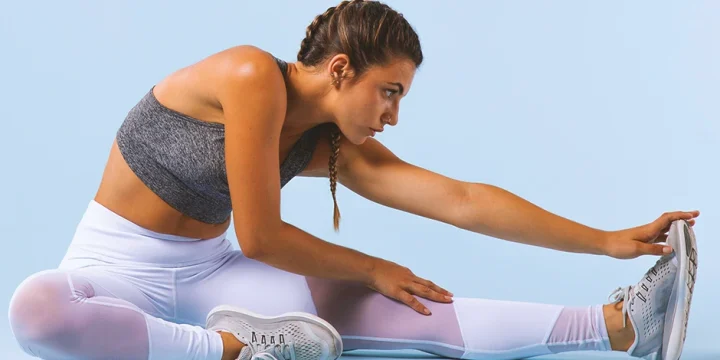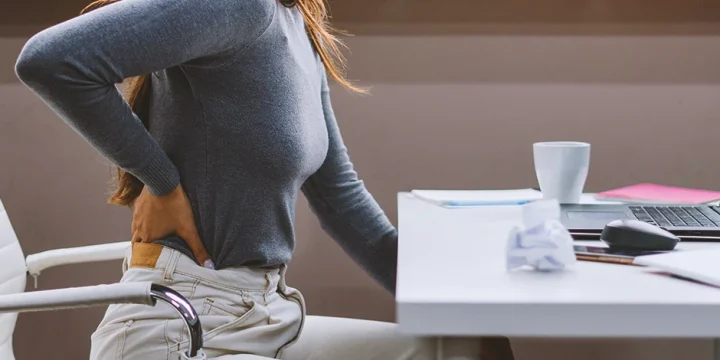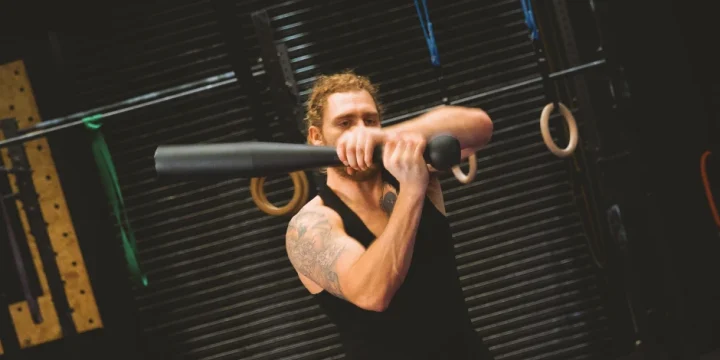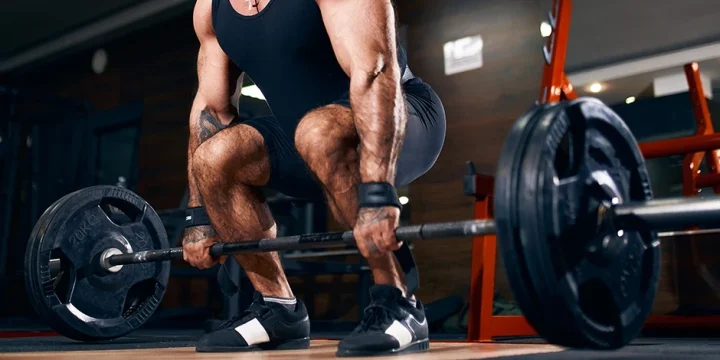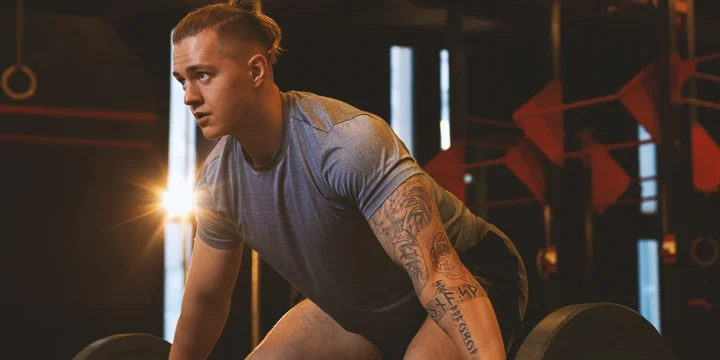Incorporating balance training, physical exercise, and strength training into your daily routine is essential for overall fitness.
Particularly, balance training enhances core stability and strength, contributing to improved agility and lightness on your feet.
You might wonder, which balance exercises are most effective?
As a certified fitness trainer, I have extensive experience assisting clients of all ages in enhancing their balance through handpicked exercises.
In this article, I'll share my insights on the most effective balance exercises, explain the concept of balance, and delve into how these exercises function.
Quick Summary
- The best balance workouts include the tree pose, single-leg deadlift, single-leg balance, chair leg raises, back leg raise, balance walk, standing 3-way kick, reverse lunge, and single-leg hip hike.
- Balance is important not just for everyday tasks like going up the stairs but also for coordination improvement.
- A study from the National Library of Medicine suggests that balance training can help seniors prevent falls and foster physical independence.
- You can change the difficulty of the workouts to meet your demands; begin with your non-dominant side before mastering the other side.
The Best Exercises for Balance

After reviewing many of my workout plans and discussing the subject with my fellow personal trainers, I put together a list of nine balance exercises.
1. Tree Pose
I find the tree pose works well on the ground, a folded mat, or a BOSU ball.
It helps to strengthen your ankles, enhance your balance, and activate your core.
Here's how you do it:
- Stand with your feet together, your spine straight, and your arms extended. You may utilize either the ball or the flat side when using a BOSU.
- Gradually raise your left leg to the side of the calf and balance only on your right foot.
- Slowly raise your arms aloft to form the tree's branches. Maintain for 30 seconds before switching legs.
2. Single-leg Deadlift
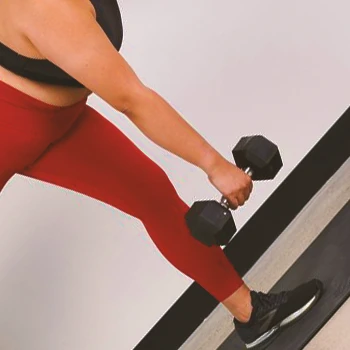
This exercise, whether done with or without weights, not only develops your glutes and hamstrings but also tests your balance and engages your abdominal wall.
To perform single-leg deadlift:
- Stand with both feet hip-width apart on the ball side of a BOSU or the ground, and place most of your weight on your right leg.
- Slowly lower your body to the floor while elevating the left leg behind you while staring at a focal point on the ground in front of you. Maintain a neutral spine and stretch both arms toward the floor.
- Stop when the back is parallel to the ground. Maintain a soft right knee.
- Squeeze the hamstrings, glutes, and core as you gently raise the back foot and return it to the floor.
Related Posts:
- How to Deadlift With Proper Form: Step-by-Step Guide
- How To Do Romanian Deadlifts
- How To Do The Stiff-Leg Deadlift
3. Single-leg Balance
This is a straightforward balance exercise. If you're beginning, you should do this while holding onto a chair.
To do this exercise:
- Place both feet shoulder-width apart as you stand.
- Raise your right knee gradually while spreading your hands out to the sides.
- Stretch your front leg straight, keep it in that position for approximately 30 seconds, and then release.
- Do this balance exercise a minimum of three times on each leg.
4. Chair Leg Raises
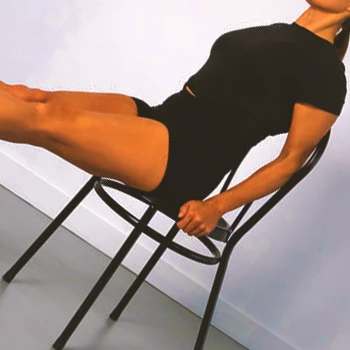
What I like about chair leg raises is that you can do them at your work desk. They offer a blend of convenience and core-strengthening prowess.
Here's how you do them:
- Sit in a chair with the spine straight and both feet exactly beneath your knees.
- Slowly lift the left leg, maintaining it up for a few seconds.
- Return to the starting position and repeat with the right leg.
- Repeat for sets.
Also Read: How to Do Hanging Leg Raises: Form and Variations
5. Back Leg Raise
Back leg raises are another simple yet effective way to build your balance.
To do them:
- Raise one foot while in a standing position.
- While holding a chair, slowly lift one leg backward without bending the knee.
- Hold for 3 seconds, then lower the leg, landing safely on the floor.
- Repeat with the other leg.
6. Balance Walk

While this exercise might seem simple, it will make your legs stronger, allowing you to walk without collapsing.
I highly recommend this after a leg day to help with active recovery.
Here's how you do this exercise:
- Place your right foot before the left foot so the right foot's heel contacts the top of your left foot's toes.
- Put your weight on your left heel and place your left foot before your right.
- Then transfer your body weight to the toes.
- Repeat the motion with the left foot. Walk 20 steps in this direction.
7. Standing 3-way Kicks
Back in high school, I incorporated this exercise into my routine and unlocked a new level of agility and strength in my legs, turning a seemingly simple move into a dynamic, full-leg exercise.
Here's how you do them:
- Standing on one leg, gradually raise the other leg before you with a gentle, unlocked knee.
- Return your raised leg to the middle while keeping it straight.
- The same leg should be softly raised to the side, brought back down, and extended behind your body.
- Perform as many in each direction as you can.
- Your physical therapist might increase the difficulty of the motion by eliminating the supporting surface.
8. Reverse Lunge
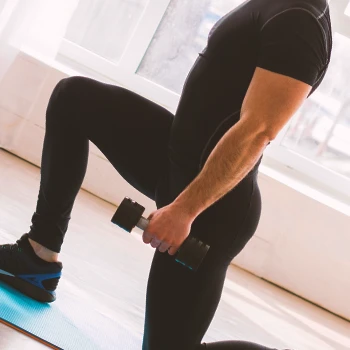
While this exercise initially challenged many of my beginner clients, it's a game-changer for lower-body strength and balance.
To perform reverse lunge:
- Stand with your feet together and your hands on your hips.
- Keeping your core muscles engaged, your chest erect, and your shoulders stacked over your hips, take a huge stride back with your left foot and descend until your right thigh is parallel with the ground and your knees form 90-degree angles.
- To get out of the lunge, push through the midfoot and heel of your right foot, then pull your left foot forward to return to standing, keeping your left foot raised off the floor.
9. Single-leg Hip Hike
I recommend this straightforward exercise as a powerful ally for enhancing hip stability and balance.
Here's how to do it:
- Stand with your feet together, your arms at your sides, and your hands on your hips.
- Lift your left leg a few inches off the ground and shift your weight into your right foot. This is your starting point.
- Maintaining a straight right leg, bend the body somewhat to the left side and descend the left hip several inches.
- Pause, then bend your body to the right to raise your left hip back to the standing position.
What Is Balance?

Balance refers to your capacity to govern your torso in space by equally spreading your weight and remaining upright [1].
There are two forms of balance: static and dynamic.
Here's what they mean:
- According to PubMed, dynamic balance refers to the capacity to move outside the body's center of gravity while maintaining postural control [2].
- Static balance is the capacity to keep the body's center of mass within its base of support [3].
Both balance forms are necessary and may be improved with specific workouts.
Balance training may benefit people of all ages. Athletes discover that it can improve their performance.
A study from the National Library of Medicine suggests that balance training can help seniors prevent falls and foster physical independence [4].
How These Exercises Work

Balance workouts target your core, legs, and lower back muscles. Lower-body strength training might also help you enhance your balance.
"While balance exercises might be difficult, constant effort can make them easier. As the workouts grow simpler, gradually increase the number of repetitions. When you start, you may want to have someone oversee or help you."
- Erin Pereira, Certified Personal Trainer & Specialist in Orthopedic Physical Therapy
You may change the difficulty of the workouts to meet your demands. Begin with your non-dominant side before mastering the other side.
If you wish to balance your body between the two sides, do the non-dominant side twice.
Once you've mastered the exercises, attempt them with both.
FAQs
What Training Methods Improve Balance?
The training methods that improve balance include standing with your body weight on one foot and elevating the other to the side or behind you, walking a tightrope with your heel directly in front of your toe, and rising and sitting from a chair without utilizing your arms.
Can Poor Balance Be Improved?
Yes, poor balance can be improved. Walking, weight training, and particular routines can all help enhance good balance and reduce falls, especially in older persons. Walking promotes lower-body strength, which is essential for excellent balance.
What Are the 5 Elements of Balance Training?
The 5 elements of balance training are aerobic fitness, stretching, strength training, flexibility, and core exercises.
References:
- https://pubmed.ncbi.nlm.nih.gov/29018817/
- https://pubmed.ncbi.nlm.nih.gov/29438911/
- https://www.ncbi.nlm.nih.gov/pmc/articles/PMC8697465/
- https://www.ncbi.nlm.nih.gov/pmc/articles/PMC3812830/
About The Author
You May Also Like
